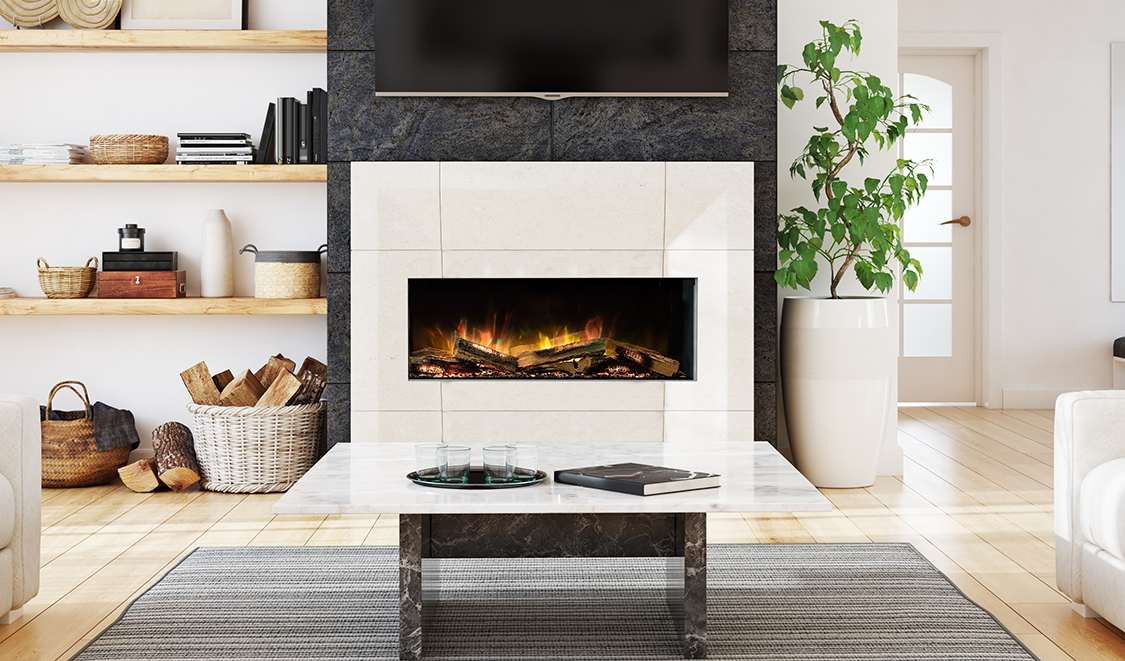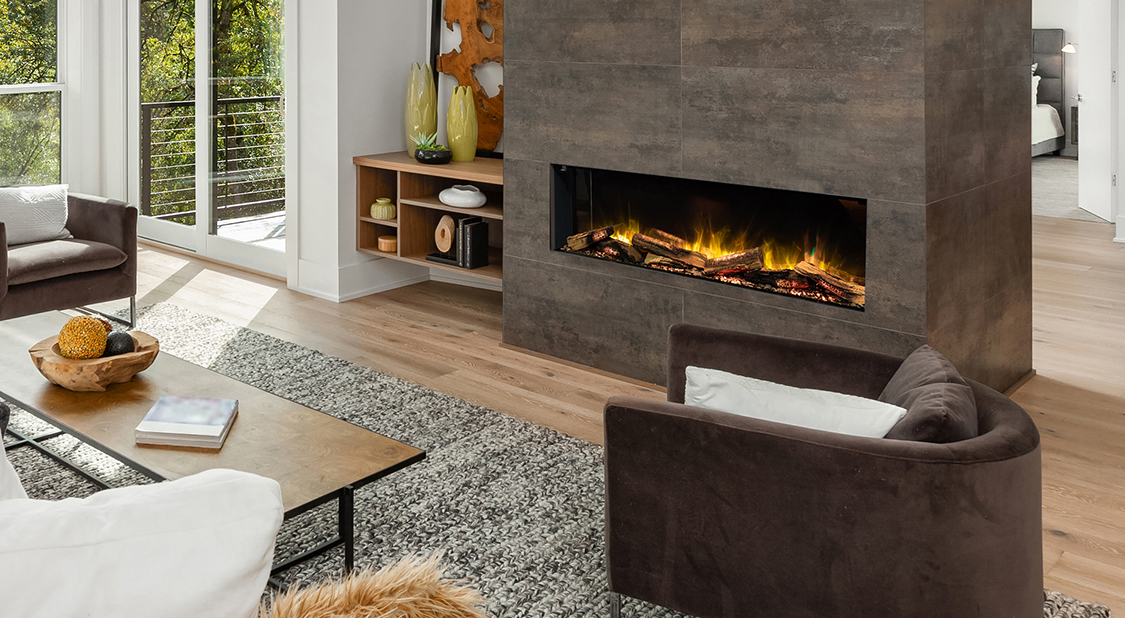
Have you ever searched on YouTube “fireplace sounds” and found it inexplicably calming? Well, there’s actually a reason for this.
According to research, the flickering flames and crackling sounds of a wood-burning fireplace creates a calming ambiance that reduces stress and promotes relaxation more effectively than any other heating method. Why? Apparently, the soothing visuals and auditory stimuli of watching a fire can lower blood pressure and, therefore, relax you! (Brave in Bloom) (Electric Fireplaces Direct).
It’s no wonder, then, that wood-burning fireplaces have become more and more popular over the years. However, with its popularity also comes increasing concerns about air quality and regulations in California. Today, we’ll go over local laws and regulations regarding wood-burning fireplaces and how you can have one with peace of mind.
California Wood-burning Fireplace Laws
California’s rules about wood-burning fireplaces aim to keep the air clean and protect the environment. And, although the state does not have a statewide ban on wood-burning fireplaces, there are specific regulations set at the regional level by local air quality management districts (AQMDs).
Here’s what you need to know:
- California Building Code: The California Building Code (CBC) offers guidelines and requirements for building and installing fireplaces in the state. For example, the CBC requires fireplaces to meet certain safety and performance standards, such as emission limits and efficiency criteria. You can find more details about these rules on the California Building Standards Commission website.
- Air Quality Management Districts (AQMDs): California is divided into several Air Quality Management Districts, each of which can set its own regulations, and are often stricter than state standards. Here are some of the key districts with notable regulations:
○ Bay Area Air Quality Management District (BAAQMD): They issue “Spare the Air” alerts, during which wood burning is not allowed. They also have rules for installing new wood-burning devices, as only EPA-certified wood stoves and inserts are allowed.
○ South Coast Air Quality Management District (SCAQMD): They restrict wood burning on days with high pollution and require the use of EPA-certified wood-burning devices.
○ San Joaquin Valley Air Pollution Control District (SJVAPCD): Similar to BAAQMD, they run “Check Before You Burn” programs and restrict wood burning under certain conditions.
As you can see, wood-burning regulations in California are complex and intricate. While one area might have stringent rules, another might be more lenient. It’s crucial, therefore, you comply with these regional rules to avoid fines or trouble with the law, and, if you find yourself in areas with strict wood-burning regulations, maybe consider other alternatives such as gas or electric fireplaces. European Home, for instance, offers approved and compliant fireplace options for California residents.

Regional Restrictions and Air Quality Management Districts (AQMDs)
If you’re talking about fireplace regulations in California, chances are Regional Air Quality Management Districts are going to come up. AQMDs play a crucial role in enforcing wood-burning restrictions as they can reduce harmful emissions and improve air quality.
One of the interesting things about them is that each has the authority to implement and enforce regulations tailored to the specific air quality needs of their region. That is, each region has its own air quality needs, and Regional Air Quality Management Districts are responsible for seeing them through.
Here’s how they do this:
- Air Quality Alerts: AQMDs issue alerts like “Spare the Air” or “Check Before You Burn” to ban wood burning when pollution is high.
- Regulation and Compliance: AQMDs set rules for homeowners and businesses, like restrictions on new wood-burning devices and bans during certain times (as seen on the point prior).
- Inspections and Monitoring: AQMDs inspect and monitor air quality and issue fines when needed for non-compliance.
- Public Education: AQMDs educate the public on wood smoke risks and talk about alternatives like gas or electric fireplaces.
Why is there a “No wood burning” in California movement? And what are its implications for residents?
This term refers to the growing restrictions on wood burning in different parts of California due to the concerns about air quality and public health. What does this mean for you? Well, it means you might face more rules about when and where you can use your wood-burning fireplace. It also means homeowners like you may need to consider alternative heating and fireplace options, such as gas, electric, or EPA-certified wood stoves, which produce fewer emissions and comply with local regulations.
You need to stay informed about your local AQMD regulations and comply with any restrictions or bans on wood burning. Failure to do so can result in fines and other penalties!
Exceptions and Alternatives
All is not lost! While many regions in California have strict regulations, there are specific situations where the use of wood-burning fireplaces may still be permitted! For example:
All is not lost! While many regions in California have strict regulations, there are specific situations where the use of wood-burning fireplaces may still be permitted! For example:
- Rural Areas: Less populated rural areas often have fewer restrictions because of their better air quality and fewer regulations.
- Designated Burn Days: Some regions allow wood burning on specific days when air quality is favorable (usually outside high pollution seasons).
- Emergency Heating: This is only during power outages or extreme weather, especially where other heating options are limited.

Are there benefits to using alternative fireplaces?
European Home offers a wide range of fireplaces that are approved for use in California, including alternatives to traditional wood-burning fireplaces. But what are the benefits of using these?
- Gas Fireplaces: Offer warmth and ambiance without wood-burning emissions. Easy to use, efficient, and remote-controlled.
- Electric Fireplaces: Ideal for areas with wood-burning restrictions, and they provide realistic flames and heat without emissions. Easy to install and maintain.
Compliance and Installation
It may feel overwhelming to keep up with local regulations, especially if they keep changing and vary depending on where you live. However, ensuring compliance with them is crucial. Here are some tips to keep up and still enjoy your fire:
- Understand Local Regulations: Know your regional AQMD rules, burn bans, and approved fireplaces or stoves.
- Consult with Professionals: Hire certified professionals for installation and maintenance to meet local codes and safety standards. You can check out our Dealer Locator for a fireplace installer near you.
- Choose Approved Products: Use California-approved fireplaces that meet emissions and efficiency standards.
- Regular Maintenance: Keep your fireplace safe and functional with regular cleaning, leak checks, and component inspections.
Final Thoughts
In short, although California doesn’t have a statewide ban on wood-burning fireplaces, staying up to date about the regulations set by regional AQMDs is extremely important.
European Home offers a range of compliant fireplace options, including gas and electric, to help you adhere to these regulations while still enjoying the ambiance of a fireplace. Find out more about them today and reach out for expert advice!
Disqus comments will appear here